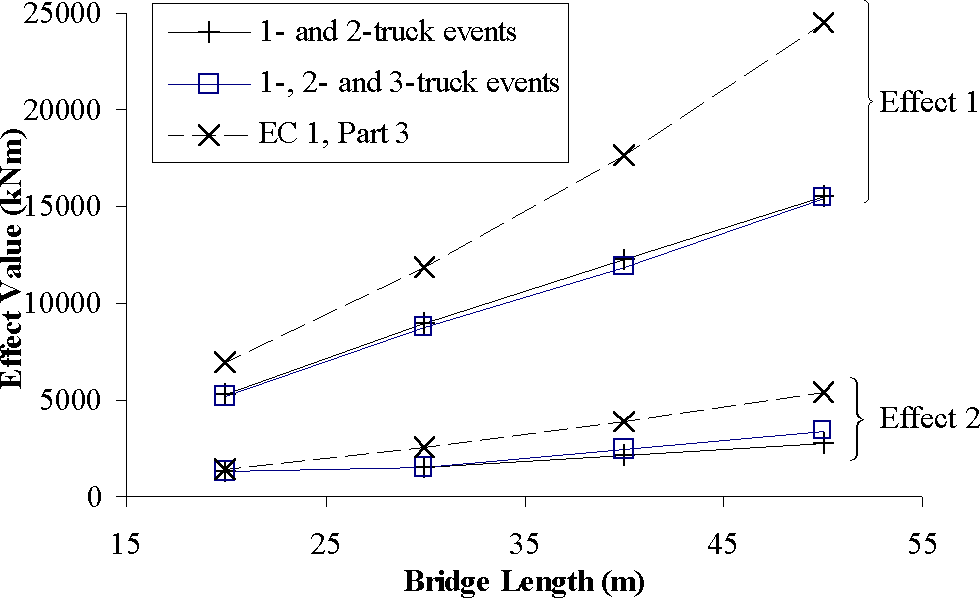
engineering & technology publications
ISSN 1759-3433
PROCEEDINGS OF THE SIXTH INTERNATIONAL CONFERENCE ON COMPUTATIONAL STRUCTURES TECHNOLOGY
Critical Loading Events for the Assessment of Medium Span Bridges
+University College Dublin, Ireland *Trinity College Dublin, Ireland
Real-time vehicle weights and frequencies were measured at a site in France using WIM technology. The data was analysed to determine the parameters of the statistical distributions that characterise that traffic flow [1]. Monte-Carlo simulation is used to generate a traffic file whose statistical distributions closely match those of the measured data. The simulations use influence lines to calculate the value of the load effects for any position and arrangement of truck(s). In this study two load effects were considered:
- Effect 1: Bending moment at the mid-span of a simply supported bridge,
- Effect 2: Bending moment at the central support of a two-span continuous bridge.
It is clear in Figure 147.1 that the implications of neglecting three-truck events depends quite significantly on the effect considered. As the same traffic was used, this can only be attributed to the characteristics of the influence line under consideration. The influence line for Effect 2 has a less pronounced peak than Effect 1. In particular, the length for which the influence line exceeds 80 44 a greater chance that three trucks may be located in the critical zone to induce a larger effect than two trucks. This fact may account for the differences between Effect 1 and 2 in Figure 147.1. The authors conclude that, in assessing site-specific bridge loading for bridge lengths up to 50 m and in free flowing situations, both two- and three-truck events should be modelled.
- 1
- Grave, S.A.J., O'Brien, E.J. and O'Connor, A.J., "The determination of site- specific imposed traffic loadings on existing bridges", Bridge Management 4, Eds. M.J. Ryall, G.A.R. Parke and J.E. Harding, Thomas Telford, 2000, pp. 442-449.
- 2
- EC 1: Basis of design and actions on structures, Part 3: Traffic loads on bridges, European Prestandard ENV 1991-3: European Committee for Standardisation, TC 250, Brussels, 1994.
purchase the full-text of this paper (price £20)
go to the previous paper
go to the next paper
return to the table of contents
return to the book description
purchase this book (price £125 +P&P)
